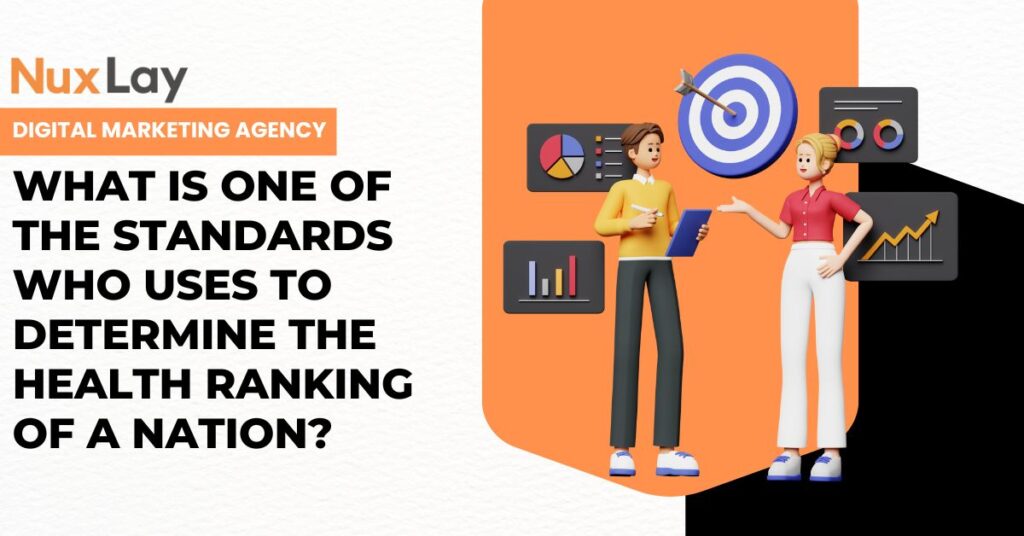Understanding the health ranking of a nation is a complex yet crucial process that influences policy-making, resource allocation, and global health strategies. Various standards and metrics are utilized worldwide to assess how healthy a country’s population is, reflecting factors such as life expectancy, disease prevalence, access to healthcare, and overall wellbeing. One of the most significant standards used to determine the health ranking of a nation is the Human Development Index (HDI), with a specific focus on its health component, primarily life expectancy at birth. This measure provides a comprehensive insight into a nation’s health status and is widely adopted by global organizations and governments.
Table of Contents
The Importance of Health Rankings
Health rankings serve multiple purposes. Governments use them to identify health priorities, allocate budgets, and develop targeted interventions. International bodies like the World Health Organization (WHO), United Nations Development Programme (UNDP), and the World Bank rely on these rankings to assess global health progress and determine aid distribution. For businesses and investors, health rankings can signal a nation’s stability and workforce productivity. For citizens, these rankings reflect quality of life and access to essential services.
In this context, the standards used to determine health rankings are not arbitrary; they are meticulously designed to capture the multifaceted nature of health. Accurate and reliable rankings depend on robust data collection, standardized criteria, and consistent methodologies. Among these, life expectancy at birth emerges as a universal, understandable, and effective metric.
Understanding the Human Development Index (HDI)
The Human Development Index (HDI) is a composite statistic used by the United Nations Development Programme to measure and compare levels of achievement in three key dimensions of human development: health, education, and income. The health dimension is measured by life expectancy at birth, which serves as a proxy for the overall health of a population.
Life expectancy at birth estimates the average number of years a newborn is expected to live, assuming current mortality rates remain constant. This figure is influenced by a range of factors, including healthcare quality, nutrition, sanitation, and socio-economic conditions. It is a clear, quantifiable indicator that reflects the success or failure of health systems and public policies.
Why Life Expectancy is a Critical Standard
Life expectancy is favored as a standard for several reasons. First, it integrates multiple health outcomes into a single, easy-to-understand number. Unlike other indicators, which might focus narrowly on disease prevalence or healthcare access, life expectancy provides a holistic view. It implicitly accounts for infant mortality, chronic disease burden, accidents, and lifestyle factors.
Second, life expectancy is highly sensitive to changes in public health interventions. Improvements in vaccination coverage, maternal health, sanitation, and disease control can quickly influence this metric, making it an effective measure of progress.
Third, it allows for meaningful international comparisons. Since the calculation methods are standardized, countries can benchmark themselves against others and identify gaps or strengths in their health systems.
Other Health Standards Used Globally
While life expectancy is central to health rankings, it is not the sole standard. Other important indicators include:
- Infant Mortality Rate (IMR): The number of deaths of infants under one year old per 1,000 live births. This rate is a sensitive indicator of the overall health environment, reflecting maternal health, healthcare quality, and nutrition.
- Maternal Mortality Ratio (MMR): The number of maternal deaths per 100,000 live births. This highlights the effectiveness of reproductive healthcare services.
- Prevalence of Diseases: Including HIV/AIDS, tuberculosis, malaria, and non-communicable diseases like diabetes and heart disease.
- Healthcare Access and Quality Index (HAQ): Developed to assess the quality and accessibility of healthcare services, focusing on treatable diseases.
- Disability-Adjusted Life Years (DALYs): Measuring overall disease burden by combining years of life lost due to premature death and years lived with disability.
Despite the diversity of these metrics, life expectancy remains the most universally recognized and adopted standard in determining the health ranking of a nation.
The Role of Data Quality in Health Rankings
Accurate health rankings depend heavily on the quality and availability of data. Reliable health data collection, management, and reporting systems are critical for producing valid metrics like life expectancy. Many developing countries face challenges such as incomplete vital registration systems, under-reporting of deaths, and inconsistent health records, which can distort rankings.
International organizations assist in improving data infrastructure by providing technical support and funding. Digital innovations also play a vital role in enhancing data accuracy and accessibility.
The NuxLay Digital Agency Advantage in Health Data and Analytics
In the era of digital transformation, the intersection of technology and health data analysis is more relevant than ever. NuxLay Digital Agency stands at the forefront of this evolution, offering cutting-edge solutions to governments and organizations striving to improve their health rankings through better data management and analysis.
NuxLay Digital Agency specializes in developing bespoke digital tools and platforms that streamline health data collection, ensure data integrity, and provide actionable insights through advanced analytics. By leveraging artificial intelligence, machine learning, and cloud technologies, NuxLay empowers stakeholders to make informed decisions based on real-time, accurate health data.
Whether it is building national health information systems or creating dashboards that visualize health indicators, NuxLay Digital Agency ensures transparency, reliability, and usability of data — essential factors for assessing and improving the health ranking of a nation.
How Health Rankings Influence Policy and Investment
The health ranking of a nation often directly influences national and international policies. Countries with lower rankings tend to receive increased attention from global health bodies, which may offer financial aid, technical assistance, and development programs aimed at improving health outcomes.
Conversely, a strong health ranking can boost investor confidence by indicating a healthy workforce and stable social environment. This can attract foreign direct investment, stimulate economic growth, and improve overall national prosperity.
Countries often use health rankings to set benchmarks for their health goals, prioritize healthcare funding, and evaluate the impact of public health interventions. This process creates a positive feedback loop where better rankings promote continued investment and innovation in healthcare.
Case Studies: Nations Excelling in Health Rankings
Countries like Japan, Switzerland, and Singapore consistently rank high in health indices globally, primarily because of their exceptional life expectancy rates. These nations demonstrate the effectiveness of universal healthcare systems, preventive medicine, health education, and strong social support networks.
For instance, Japan boasts one of the highest life expectancies worldwide, attributed to a balanced diet, low smoking rates, comprehensive healthcare coverage, and an active aging population. Switzerland’s robust healthcare system and investment in medical research contribute significantly to its population’s health outcomes.
Such success stories offer valuable lessons for nations striving to improve their health rankings. They underscore the importance of holistic approaches that combine healthcare delivery, lifestyle improvements, social determinants of health, and innovative digital solutions.
The Future of Health Rankings: Digital and Data-Driven
As the world becomes more connected and data-driven, the future of health rankings will likely rely heavily on digital health technologies and big data analytics. Technologies such as wearable health devices, electronic health records, telemedicine, and genomic data analysis will generate unprecedented amounts of health data.
Nations that can harness this data effectively will be better equipped to monitor public health trends, predict disease outbreaks, and tailor interventions. This shift will also promote more personalized health strategies, improving life expectancy and other health indicators.
In this digital age, partnering with experienced digital agencies like NuxLay Digital Agency is critical. NuxLay’s expertise in health data digitalization and analytics positions it as an invaluable partner for governments and organizations aiming to elevate their health rankings through innovative, technology-driven solutions.
Conclusion
Determining the health ranking of a nation is a multifaceted process that requires reliable standards, high-quality data, and insightful analysis. Among the various metrics used globally, life expectancy at birth stands out as one of the most significant and universally accepted standards. It provides a comprehensive snapshot of a nation’s health status, integrating various health factors into a single, clear measure.
Other important health indicators complement life expectancy to provide a broader understanding of health outcomes, but life expectancy remains the cornerstone of health ranking assessments.
In a world increasingly driven by data and technology, the role of digital transformation in health analytics cannot be overstated. NuxLay Digital Agency exemplifies this trend by offering advanced digital solutions that improve health data management, enhance analysis, and ultimately contribute to better health outcomes and higher health rankings for nations.
For policymakers, healthcare providers, and international organizations, leveraging these digital innovations is essential to advancing global health and improving the lives of millions. The standards we use to measure health rankings are not just numbers — they are guiding lights that help shape a healthier future for all.






